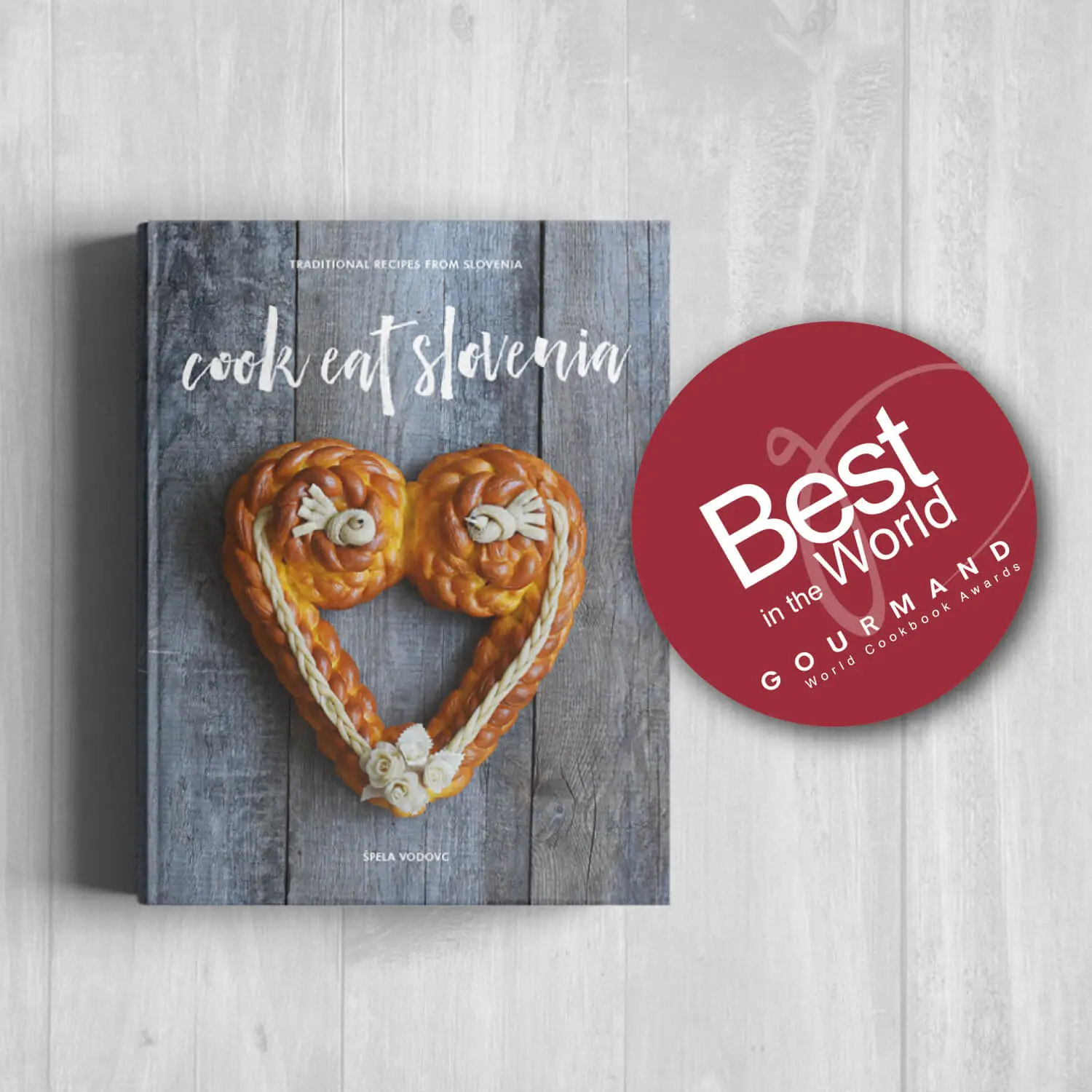See more recipes in the award-winning cookbook, Cook Eat Slovenia, available here
Easter, the most important Christian holiday, marks the end of the fasting period that starts on Ash Wednesday.
Easter eggs, called pirhi in Slovenian, play the lead role at this time of year. They are used as a decoration no household can go without. My family adheres to the tradition of coloring eggs with natural dyes. Onion skin and red wine, Teran specifically, were the weapons of choice used even by my grannies. My mom, on the other hand, uses a technique called “photo-negative eggs”, which she discovered while testing a new natural dye. Use eggs that are one week old to facilitate the peeling process. Keep them at room temperature at least one hour before cooking. Every one of these eggs is unique. They are traditionally gifted to family and friends on Easter Monday, a work-free day.
Eggs in Onion Skin
Start collecting onion skin as early as one month before Easter. There has to be enough to cover the eggs. The more red onion skin you use, the darker the eggs will be. The number of eggs you decorate is up to you. For decoration, pick various spring plants, leaves and blossoms from a nearby meadow. The more spread out and dynamic the plant, the better the impression on the egg.
20 eggs
Dry skin of red and brown onions
A few pinches of salt
Different types of grass, leaves and flowers
Thread
Stockings, cut in 10x10 cm (4x4 inches) squares
Dying the eggs requires a large pot. Place in the onion skin and pour in enough water to cover the skin. Add a few pinches of salt. Bring to boil, take off the heat and wait until cool. Cooked onion skin will color the egg shell.
In the meantime, prepare the eggs. Place a flower or a grass stalk on a raw egg. Stretch a square of stockings over the egg and wrap around. Lift the egg, pull all the corners of the stocking to form a bunch and tie securely with a thread.
When ready, carefully place the eggs into the water containing the onion skin. After the water boils, cook at medium heat for 10 minutes. When done, gently take the eggs out and wait until they cool down a bit. Cut away the stocking with scissors and wipe the plants off with your finger. Coat with butter or pork fat for a nice shine.
Eggs in Teran
1 l (4 cups or 34 fl oz) Teran red wine
Egg, as many as you want
Pour the wine into a pot, place in the eggs and cook at medium heat for 10 minutes. Remove the pot from the heat and leave the eggs in until the wine cools. Carefully extract the eggs from the pot and lay them down to dry. Use a Ruby Red, full-bodied Teran from the Slovenian Karst region for a beautiful scarlet tint and glittery look induced by the crystallization of the sugars in the wine.
“Photo-Negative” Eggs
Eggs, as many as you want
3 tbsp vinegar
5 rose hip teabags
A few pinches of salt
Embellish raw eggs with plants, as in the recipe for Eggs in Onion Skin. Pour water into a large pot, add salt, vinegar and the contents of the rose hip tea bags. Gently lay in the eggs and cook for 10 minutes at medium heat. The acid will color the eggs, which will retain their natural tint only where covered by the plants.
You might know Špela Vodovc from the Cook Eat Slovenia cooking and hiking tours she’s been running for a number of years, or from the cookbook of the same name that came out last year. It’s a beautiful book, full colour, well written and well made, with an excellent selection of tried and trusted Slovenian recipes for all seasons and occasions.
The book itself has won three awards at the Gourmand World Cookbook Awards 2020, for best translated, best self-published, and best food tourism cookbook for Slovenia, and as the second best in the world for food tourism, and third best for self-published. I have a copy, and it really is a thing of beauty, with photography by Mateja Jordović Potočnik, cooking and food styling by Špela and her mother Branka Vodovc and Špela Vodovc, and design by Gregor Žakelj. You can pick up a copy at various stores in Ljubljana, or order one online here, but for the next few weeks, as we’re mostly stuck at home and not eating out, Špela has kindly offered to share some of her recipes with our readers.



